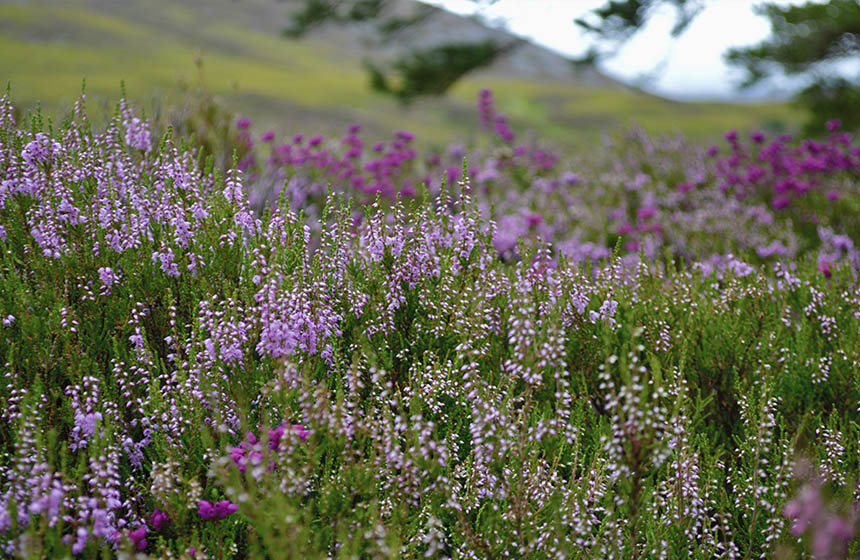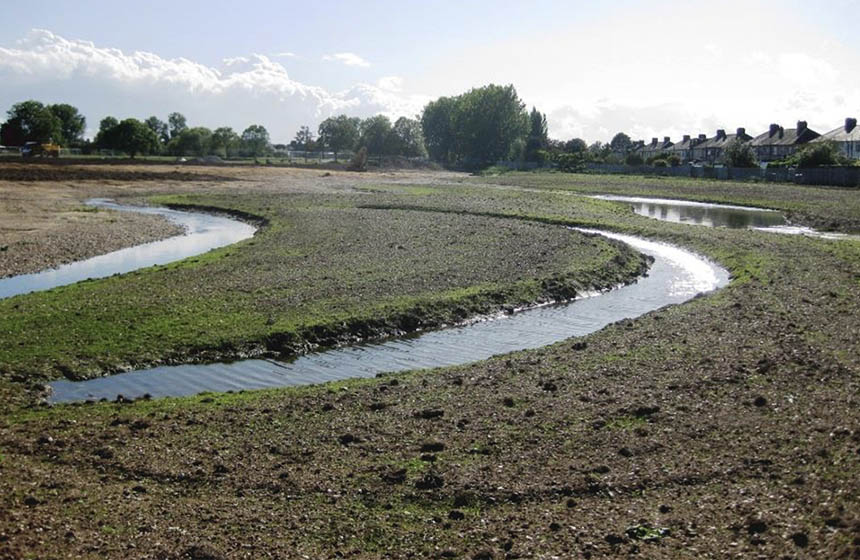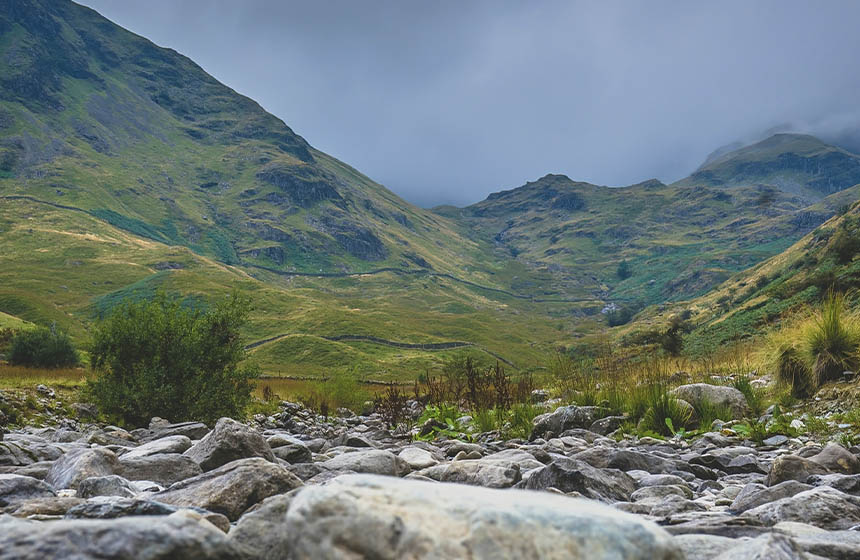Beldorney Estate Rewilding Project (Highlands Rewilding)
Through rewilding riparian habitats and establishing regenerative agriculture, the Beldorney Estate rewilding project aims to increase carbon sequestration and biodiversity while delivering benefits for local communities. The estate encourages research partnerships to assess baseline biodiversity and carbon on the estate and build the science on natural capital verification.
Nature-based intervention:
Beldorney estate presently features extensive grasslands once subject to heavy grazing, with patches of both native and non-native woodlands as well as peatland areas (1). Highlands Rewilding acquired the estate in 2021 and conducted assessments to evaluate carbon stocks using a combination of data collection and modelling techniques. Additionally, a range of biodiversity assessments have been used to identify specific habitat types to target management initiatives and establish a biodiversity baseline for the estate. Primary interventions for the estate began in 2022 and involved enhancing carbon sequestration and biodiversity by expanding broadleaf woodland areas along the River Deveron and implementing regenerative agriculture practices to restore grasslands. Concurrently, plans are in development for the restoration of peatlands and wetlands as well as the implementation of sustainable timber production (2). Management of the estate is conducted in consultation with the local community.
Overview of context:
Historical land use of the area encompassed farm steadings, crofts, grazing, and more recently, the establishment of timber plantations. Until the 1870s, the estate featured extensive areas of woodland, but presently only 7.9 hectares of semi-natural woodland and 13.2 hectares of plantation-origin woodland remain in these areas (1). There are additionally 87 hectares of woodland created by planting between 1900 to 2020, including 19 hectares of broadleaf woodland, 6 hectares of mixed conifer and broadleaf, nearly 50 hectares of conifer plantations, and 12 hectares of open ground within forest areas. A 2022 analysis of natural carbon stocks indicate that estate habitats are likely to be net emitters of carbon due to degraded peat soils, but under future management scenarios have the potential to provide for 85,504 tonnes of carbon dioxide equivalent (tCO2e) sequestered over the next 100 years.
Case effectiveness on
Climate change
Since the start of management in 2022, baseline surveys of carbon stocks have been conducted to guide management plans. Surveys were conducted in collaboration with companies and universities and covered grassland soil sampling and estimations of woodland and peatland carbon stock. The total carbon storage for the estate is estimated to be 114,044 to 178,585 tCO2e (1). While grasslands in the estate contribute the largest share of carbon storage due to the expanse of this habitat, grassland soil organic carbon content in Beldorney is 56% of what is typical for similar grassland types, highlighting potential for improvement in carbon storage. Woodland and peatland habitats are estimated to contribute a similar carbon stock as grasslands, despite their smaller area. While changes in climate mitigation after the start of management have not been reported, it is expected that with the execution of plans to manage grasslands through low-intensity regenerative grazing, the removal of non-native plantations, the creation of ponds, and planting of native broadleaf woodland, carbon sequestration in the estate will increase.
To provide resilience against climate change, Highlands Rewilding will be creating ponds across the estate. They aim for the ponds to buffer against floods during wet seasons and to increase water availability during droughts as well as functioning as a source of water for livestock used in grazing management strategies. Regenerative agriculture and food forest strategies are planned to contribute to resilient food production in the face of worsening climate conditions.
Ecosystem health
Ecological effect: Not reportedBiodiversity monitoring on the estate to establish baselines employed a suite of methods including malaise and pitfall traps, eDNA analysis from aquatic samples, butterfly transects, moth trapping, and acoustic bird surveys. A total of 26 priority invertebrate species have been identified by these surveys so far, with an additional 17 priority species found in a 5 km radius from the estate. This highlights the potential to increase numbers of priority species with appropriate habitat restoration and creation. These surveys identified 17 priority species for habitat restoration efforts. Additional plans to enhance biodiversity on the estate involve implementing seasonal grassland grazing that aims to provide food and habitat for birds and improve species richness of grasslands, for which a bale grazing research programme has been initiated, and the creation of ponds to provide wetland habitats. Ongoing monitoring will assess future changes in biodiversity.
Socioeconomic outcomes
Highlands Rewilding projects aim to provide opportunities for community ownership of land across all estates (see Bunloit Estate case study) in light of concentrated land ownership in Scotland (4). Through a mass-ownership model, local communities are represented in land management decisions, with 40% of shareholders living in Scotland (5). To ensure that communities prosper from rewilding and natural capital projects, Highlands Rewilding has outlined an ‘Engagement Roadmap’ that delineates community engagement strategies within the project. The roadmap aims to consult with local communities to identify their desired socio-economic benefits, such as potential advantages in job creation, increased access to nature, and support for locally produced food. In line with this roadmap, Highlands Rewilding has received funding from the Facility for Investment Ready Nature in Scotland scheme to create partnerships with communities (Joint Ventures) to capitalise on benefits from nature recovery and generated ecosystem services (6).
The current staff of 27 employed across Highlands Rewilding’s estates includes 17 local people (2). Ongoing efforts at Beldorney to involve local communities entail organising discussion sessions at the estate and a citizen-scientist program for local volunteers to document species in the River Deveron.
Governance
Local participation in Governance: PassiveHighlands Rewilding adopts a participatory governance approach, involving community members in the decision-making process for estate initiatives. Functioning as a mass ownership company, it has 809 shareholders, with 5% residing in local communities. Highlands Rewilding underscores the residence and work of their board of directors in the Highlands as a key aspect of their organisational structure.
Finance
Highlands Rewilding has initiated two equity rounds from 2021 to 2023, bringing in £7.6 million from 53 funders and £3.5 million from crowdfunders and private investors respectively. Highlands Rewilding also received funding from the Facility for Investment Ready Nature in Scotland (FIRNS) scheme, which is funded by the National Lottery Heritage Fund, the Scottish Government and NatureScot. Funds from NatureScot’s Nature Restoration Fund will contribute to pond creation at Beldorney.
Monitoring and evaluation
Baseline surveys of carbon and biodiversity at Beldorney were conducted in 2022 (1). Measurements of soil organic carbon stocks were obtained using the company Agricarbon and compared with modelled grassland carbon using national figures from 2007. A carbon credit based assessment, Woodland Carbon Code, was used to estimate current carbon stock in woodlands and model future trends. These measurements were compared with data modelled using drone-based photogrammetry. Biodiversity assessments for the baseline were obtained using aquatic eDNA sampling, malaise traps, camera traps and other survey methods (2). Biodiversity assessments continue, and are documented on the National Biodiversity Network Atlas as well as a part of the national BIOSCAN and BeeWalk schemes.
In addition, management plans are informed by research in partnership with companies and universities. Partnerships with the Leverhulme Centre for Nature Recovery and Nature-Based Solutions Initiative at Oxford University provide experimental data on habitat mapping and community engagement. To understand the impacts of grazing by cows on grasslands at Beldorney, research programmes have been implemented in partnership with FAI farms in Oxford. Data sets collected include soil and grassland health and grazing intensity.
Trade-offs and limitations
The felling of conifer plantations may contribute to reductions in biodiversity and carbon sequestration in the short term, but the transition to native broadleaf woodland through restoration and planting may contribute to increases in biodiversity and carbon sequestration in the long-run.
References
- Highlands Rewilding. 2022. Second Natural Capital Report.
- Highlands Rewilding. 2023. Third Natural Capital Report.
- Highlands Rewilding. N.d. Beldorney Estate.
- Glenn, S. et al. 2019. Investigation into the issues associated with large scale and concentrated landownership in Scotland. Scottish Land Comission. 5dd7d6fd9128e_Investigation-Issues-Large-Scale-and-Concentrated-Landownership-20190320.pdf (landcommission.gov.scot)
- Highlands Rewilding. 2024. The Scotsman: How a mass-ownership company can help communities prosper, boost nature recovery and tackle climate change. The Scotsman: How a mass-ownership company can help communities prosper, boost nature recovery and tackle climate change — Highlands Rewilding
- Highlands Rewilding. N.d. Highlands Rewilding receives funding from the Facility for Investment Ready Nature in Scotland (FIRNS). Highlands Rewilding receives funding from the Facility for Investment Ready Nature in Scotland (FIRNS) — Highlands Rewilding

Intervention type
- Created habitats
- Food production
- Management
- Restoration
Ecosystem type
- Temperate forests
- Temperate grasslands
- Peatland
Climate change impacts addressed
- Drought
- Reduced water availability
Instigators
- Local private sector
Societal challenges
- Economic and Social development
- Rights/empowerment/equality
Outcomes
- Food security: Not reported
- Water security: Not reported
- Health: Not reported
- Local economics: Positive
- Livelihoods/goods/basic needs: Not reported
- Energy security: Not reported
- Disaster risk reduction: Not reported
- Rights/empowerment/equality: Unclear
- Recreation: Positive
- Education: Positive
- Conflict and security: Not reported
- No. developmental outcomes reported: 4
Resources
Read resource 1Literature info
- Grey literature




